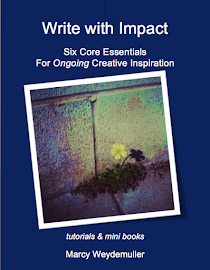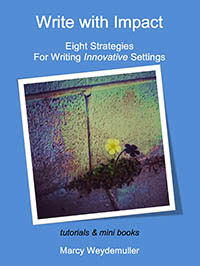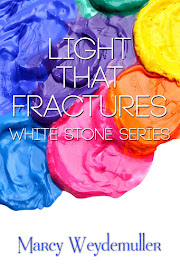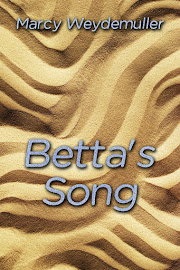 Every writer has his or her bookshelf favorites. It’s
important to find the writing mentors that can expand our depth and style in the
stories we hunger to write. But there are also some mentors whose writing
principles cross over genres and over years. These are the craft books we
return to again and again: as beginners, advanced and professional, because
each time we learn something new to apply. They have stood, or will stand, the
test of time.
Every writer has his or her bookshelf favorites. It’s
important to find the writing mentors that can expand our depth and style in the
stories we hunger to write. But there are also some mentors whose writing
principles cross over genres and over years. These are the craft books we
return to again and again: as beginners, advanced and professional, because
each time we learn something new to apply. They have stood, or will stand, the
test of time.Saturday, December 14, 2013
Reading For Craft
How-To: Writing Books That Deliver
 Every writer has his or her bookshelf favorites. It’s
important to find the writing mentors that can expand our depth and style in the
stories we hunger to write. But there are also some mentors whose writing
principles cross over genres and over years. These are the craft books we
return to again and again: as beginners, advanced and professional, because
each time we learn something new to apply. They have stood, or will stand, the
test of time.
Every writer has his or her bookshelf favorites. It’s
important to find the writing mentors that can expand our depth and style in the
stories we hunger to write. But there are also some mentors whose writing
principles cross over genres and over years. These are the craft books we
return to again and again: as beginners, advanced and professional, because
each time we learn something new to apply. They have stood, or will stand, the
test of time.
As I read with
pleasure a plethora of writing craft books over the years, I keep an ongoing
list of suggestions for my students and clients. So if you’re looking to add to
your own writing library, or give a gift to an upcoming writer, here are some
top selections from my favorites.
Getting Started
Writing Fiction For
Dummies, by Randy Ingermanson and Peter Economy.
This is one writing book I heartily wish had been written
when I started out. Although no time spent on developing craft is ever-wasted
time, the foundation advice given here enables a new writer to focus on
valuable learning techniques, instead of hit or miss possibilities.
Crafting Novels &
Short Stories, from the Editors of Writer’s Digest
The editors from Writer’s Digest have excerpted top quality
articles from their books and their magazines then compiled them into over
thirty-nine chapters to give writers practical applications for craft and
creativity. It’s a goldmine.
The wide range of talent and perspective offered by the
contributors is like a delightful banquet. This book’s advice will keep any
reader busy for the entire year ahead with pleasurable, propelling instruction.
Highly recommend!
The Productive Writer, by Sage Cohen
“The good news is that
anything is possible in the realm of productivity if you are clear about the
path or goal you are choosing, and committed to discovering and doing what it
takes to get you there.”
Sage Cohen says that productivity is a lifestyle choice and
by the time you finish this book she will cover every aspect of what that
lifestyle can look like for a writer, or any other entrepreneur with some
adjustments to their particular business. Her suggestions stem from the concept
of “Putting the “You” in Productivity.”
Developing Craft
Make A Scene, by
Jordan E. Rosenfeld
Rosenfeld takes basic functions and elements and launches
them into powerful scenes. Then she thoroughly examines scene types to
highlight their particular qualities and strengths.
The Scene Book, by
Sandra Scofield
Scofield doesn’t deal only with theory and definitions, but
also extends her insights into how-to applications through examples of novels
and movies. And then gives concrete exercises for personal works in progress to
find just the right fix to make scenes live beyond correct structure into
living scenes.
Showing & Telling,
by Laurie Alberts
She cuts through confusion, misunderstanding and error to
provide practical understanding towards achieving balance, in fiction and
nonfiction between these two concepts. Alberts gives clear definitions, shows
how to use each, in either scene or summary, and how to blend the two together “to create vibrant and essential prose.”
This book is a MUST.
Plot versus Character, by Jeff Gerke
His system integrates plot and character to deepen the
quality of your novel, by both building on your strengths and reshaping your
weaknesses. However the key dynamic in this book is the detailed development of
a character’s inner journey. Gerke himself points out that a good novel can be
written without this component and still be enjoyable. Yet, how much richer to
experience your protagonist’s transformation from the inside out?
The Writer’s Compass,
by Nancy Ellen Dodd.
Beginning with a story map and a picture map, Nancy Ellen
Dodd uses a 7-stage process to combine creative thinking with analytical
perspective to shape quality storytelling organically. It is intense. The
7-stages are not a formula, but organic, fluid, changeable, and encourage
free-form development.
How To Blog A Book,
by Nina Amir
Amir covers all the basic how-to questions of blogging in
general and how to promote and profit. There are three main categories for
fiction writers where her suggestions can fortify a writing life with ongoing
creativity.
Purpose. Characters, setting, genre, and story
question under Amir’s topic questions guide into the reason for the story as
well as the needed proposal/promotion plans. Purpose gets you to the heart and
enables the portion-by-portion development.
Consistency. The writing becomes continuous and connected.
We finish the book.
Craft. Composing in bite size sections on a
day-to-day basis highlights the quality we ‘publish’ next. We tighten our scenes, focus our settings
and build real characters.
Wild Ink, by
Victoria Hanley
There are two invaluable reasons to read Wild Ink’s second edition. First, it
encompasses a thorough introduction to the diverse YA market. Second it
demonstrates an excellent understanding of voice from which all writers can adapt
her principles to their own audiences. The wide range of possible topics,
styles and content Hanley supplies are also shown by the interviews she
includes from several YA authors in fiction and non-fiction. I found it
interesting that one common thread amongst everyone was the need to be true to
the voice of the story.
Hanley gives an outstanding Your Inner Teen Exercise to help identify where you have strengths
or weaknesses identifying with the emotional range necessary for honest
character development, voice, and dialogue. The questions can easily be adapted
to other genres to increase understanding of characterization.
Writing the
Fiction Series: The Guide for Novels and Novellas by Karen
S. Wiesner.
Writing a series can be like juggling multiple eggs on an ice rink.
Just one slip can create a crack that runs throughout the whole series. Often
writers don’t realize that one novel is about to become a series and have to
learn to balance along the way.
Wiesner details the definitions, catalyst, styles, focus,
organization, and marketing required for any series by showing explicit
examples, case studies and stumbling blocks. She thoroughly examines and warns
about the importance of characters and consistency when writing across extended
novels. On the surface this might seem to be common sense, but in reality it is
a danger that can sink your series, and/or lose future readers.
Moving Forward
The Art of War For
Writers, by James Scott Bell
In this book James Scott Bell applies Sun Tzu’s principles
for clarity in battle planning to encourage quality, craftsmanship and courage
to writers. He offers a plethora of tactical principles to help each writer
along the working path, to harness the courage and skill required to keep
writing and reach Sun Tzu’s standard.
The Constant Art of
Being A Writer, by N.M. Kelby
In her first section, The
Life, Kelby addresses the basic mindset requirements, decisions, and
pitfalls available to all writers. The
Work, comes next with articles and follow-up exercises on craft skills and
how to take your vision to find its shape.
In section three, The
Business, she gives practical detailed advice over what you can control and
what you can’t; professional conduct, contract, agents and editors, marketing,
book sales, book tours, survival tips and estate planning. Her foundational
advice, “Don’t ever lose sight of the
fact that you are a writer.
Marketing
The Tricked-out
Toolbox, by Melissa Bourbon and Tonya Kappes.
They share as writer to writer and their advice is
plentiful: marketing, branding, websites, blog/grog, networking, promotion,
trailers, swags, budgets, and PR. One of their best offerings is not in the
table of contents but runs throughout the book—sanity.
Classic
Write Away, by
Elizabeth George
Novelist Elizabeth George brings the depth of excellence and
longevity to Write Away that she also
does to her absorbing suspense novels. Her premise is that an understanding and
mastery of craft will enable writers to navigate the problems we encounter in
our novels.
In addition, with each chapter opening she shares an excerpt
from her personal journals. These excerpts open a window into the emotional
journey that writing requires, regardless of experience and success. Her
psychological and practical insights into characterization provide ample
creative fuel, no matter the specific genre.
The Key, by James
N. Frey
Mythic features are often considered to be the domain of
speculative fiction. But James N.
Frey considers them to be the foundation markers for all quality fiction,
regardless of genre. In The Key, he sets
out the reasons, the functions, the techniques and the possibilities.
One reason Frey gives is that every great fiction story
experiences a transformation of character, and mythical journeys and heroes
provide universal and ongoing dramatic patterns. We, as readers, are
emotionally and psychologically hotwired to respond. Using mythical motifs
increase reader identification and satisfaction in the story.
Happy reading. Have a great holiday season!
Share: What is
one of your 'must have' writing books on your shelf?
Read deep, marcy
Saturday, December 7, 2013
Reading For Craft
Writing
a Series
Not only does writing one novel require creativity, stamina, and
endurance to reach publishable quality, but writing a series can be like
juggling multiple eggs on an ice rink. Just one slip can create a crack that
runs throughout the whole series. Often writers don’t realize that one novel is
about to become a series and have to learn to balance along the way. Or read, Writing the Fiction Series: The Guide for
Novels and Novellas by Karen S. Wiesner.
Not only does this book fill in a long overdue gap in craft
skills for novel writers, but it also delivers. Although I knew a preview copy
was enroute, I couldn’t wait so purchased the kindle copy to get started. And I
stayed up very late my first night reading. This does not happen very often
with craft books. In fact only a few of the writing books I read make it to my
column.
Wiesner is also the author of First
Draft in 30 Day, and from First Draft
to Finished Novel. One ongoing feature of her books is her inclusion of practical,
accessible, worksheets and graphs. Organizing one novel can be daunting at
times let alone a series. Weisner skillfully blends the organizational skills
together into comprehensive sanity. Although, here I do need to note that the
sketches and outlines didn’t always show up well on the e-book version. The
print copy is much better at the design layout for easier reading.
In Writing the Fiction Series
she extends her additional resources first, by including ongoing advice and
encouragement from series authors and publishers across multiple genres, and
second, by making the full interviews available on her website. There are over
one hundred. This is a field that is vibrant and hungry for good writing. http://www.angelfire.com/stars4/kswiesner/WTSinterviews.html
And that is the key behind this book: writing a quality series.
Wiesner details the definitions, catalyst, styles, focus, organization, and
marketing required for any series by showing explicit examples, case studies
and stumbling blocks. She thoroughly examines and warns about the importance of
characters and consistency when writing across extended novels. On the surface
this might seem to be common sense, but in reality it is a danger that can sink
your series, and/or lose future readers.
I happened to be doing novella research of my own on three separate
series in different genres and applied Wiesner’s criteria. Some were written by
the same author and some by multiple authors. Each book did a good story
individually. Every series tripped up. One I tracked for location ties, one for
character, and one for premise, an ongoing mystery. The mystery series in
particular had all kinds of inconsistencies—the worst being the last book
mischaracterized an earlier murder altogether. Not a good way to finalize a
series and hope readers will return for the next.
Writing the
Fiction Series warns you of the potential landmines and shows you navigable routes
to write a sustainable high-concept fiction series and enjoy the process.
Advice that is long overdue. Advice that is fun to implement.
Share: Have you
ever stopped reading a series you really liked at the beginning? Why?
Read deep,
marcy
Subscribe to:
Posts (Atom)









